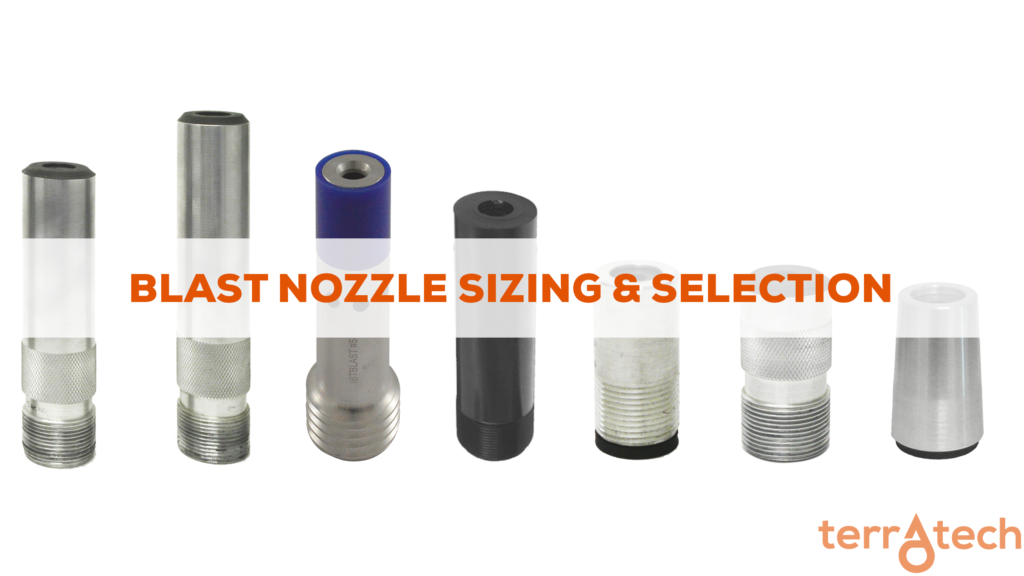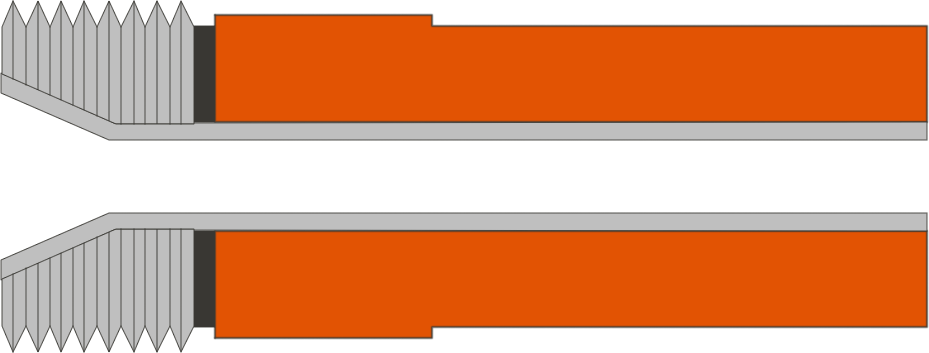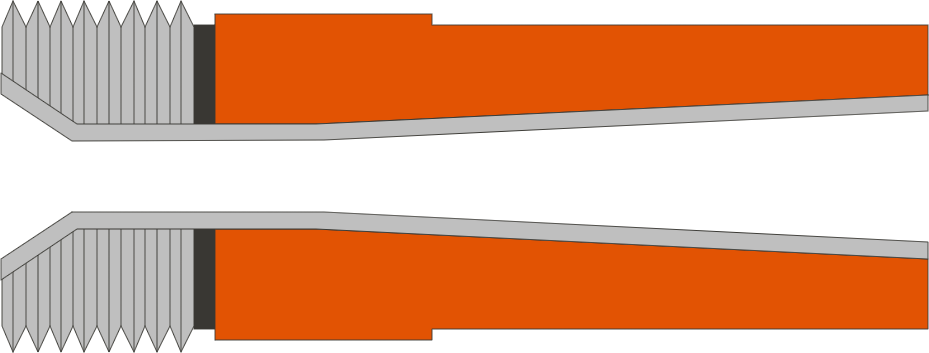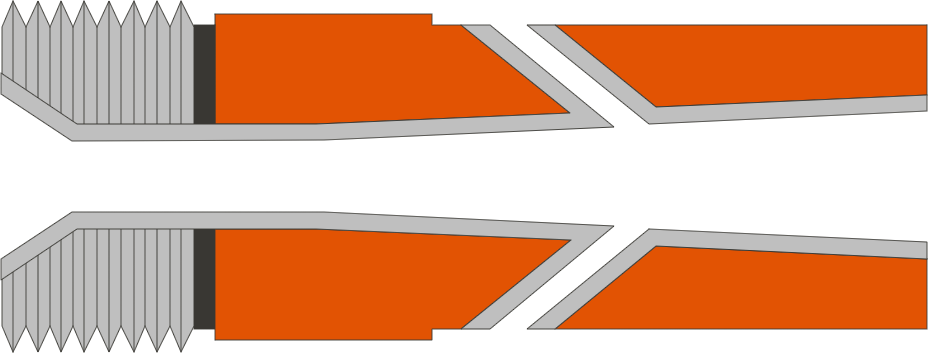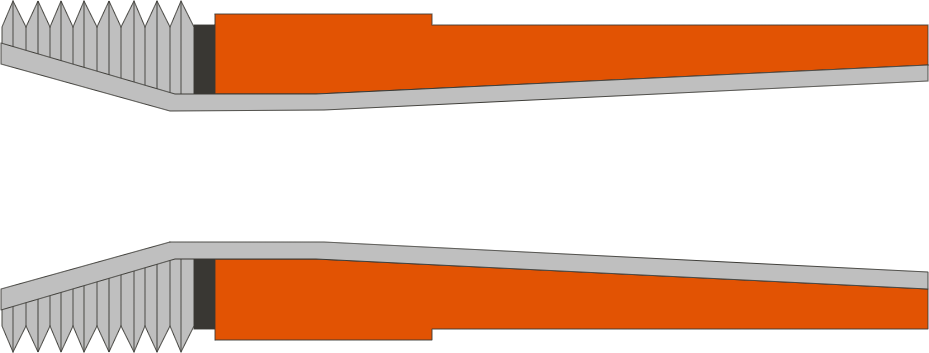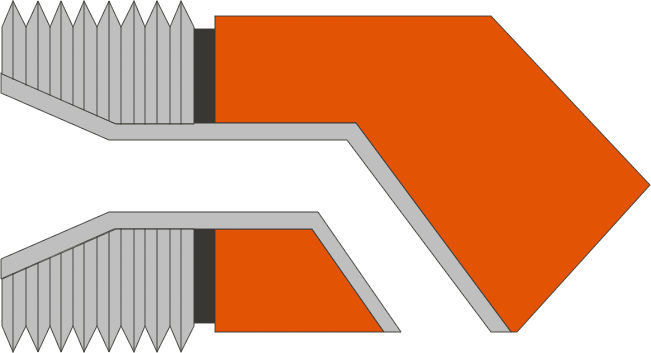Blast nozzle orifice size affects blasting productivity – the larger the bore, the bigger the area blasted, facilitating higher production rates. For each increase in nozzle size, an increase of up to 10% in your blast pattern size will occur.
However, nozzle shape, rather than orifice size, has the greatest impact on blast pattern size.
For maximum productivity, select the largest nozzle bore size that the available compressed air (pressure and flow) will support for the intended blast pressure, given the surface characteristics and specifications of the task, while taking into account that there will be a significant reduction in pressure as your nozzle wears to a larger diameter. Finding the sweet spot where your nozzle can be productive over its useful life span is key to getting the most value out of your nozzle.
Choosing a nozzle with a bore smaller than your system will support will sacrifice blasting capacity and may impact media flow. Conversely, choosing a bore size beyond what your system can support will result in your inability to blast effectively and may result in the rapid wear on the blast hose.
Example:
You are running a 375 CFM compressor at 80% capacity. In addition to the blast nozzle, the compressor is supplying air to various components (air helmet, air motors, pneumatic controls, etc.) leaving 250 CFM available for the nozzle. Referring to Table 1, you can see that 250 CFM is sufficient for a #6 (3/8'') nozzle operating at 100 PSI. A larger nozzle, or a worn #6 (3/8'') nozzle, will require more air flow to maintain a blast pressure of 100 PSI. This extra flow requirement will either overwork your compressor or decrease productivity. On the other hand, choosing a nozzle with a bore smaller than your compressor can supply will result in less than maximum productivity from the system.
Additionally, it is important that your blast nozzle be sized to the blast hose it is to be used with – blast hose ID should be at least 3-4 times larger than the bore size of your nozzle (e.g. a 3/8'' nozzle requires a minimum 1-1/4'' blast hose, a 1/2'' nozzle requires a minimum 1-1/2'' blast hose, etc.). Wrong size combinations may lead to excessive internal turbulence, pressure drop & wear points.
Typically, a 3/8'' nozzle is sufficiently constricted to produce an effective blast pressure with a 185 CFM compressor, and a 1/2'' nozzle is sufficient with a 375 CFM compressor.


